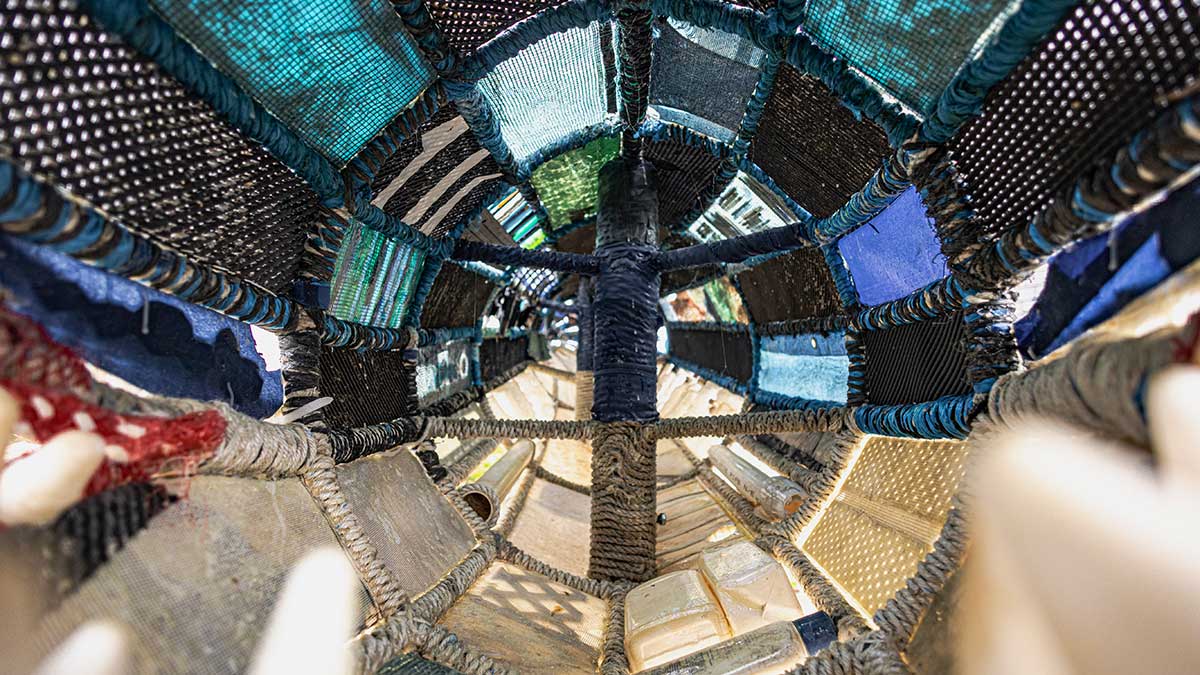
During the summer season of 2023, a 14-foot white shark loomed over Herring Cove along the Cape Cod National Seashore, reminding visitors of the potential dangers that lurk beneath the waves. However, this particular shark wasn’t like its living, breathing counterparts, as it was crafted entirely out of plastic debris. This art installation from the Center for Coastal Studies (CCS) served both as a symbol of these important annual visitors to the Cape as well as a warning to the public of a greater threat to marine life: marine debris pollution.

Funded through a unique opportunity from the NOAA Marine Debris Program and the National Park Service, this project sought to highlight plastic marine debris in an engaging way to visitors. Cindy Pease Roe, a local artist with an extensive background in upcycling plastic pollution, was commissioned to design and build a steel framework in the shape of a white shark and attach various marine debris items, found along the shoreline by groups of CCS volunteers. This spectacular sculpture was given the name “Sugar, aka Mama Shug” and placed on display at the Herring Cove Bathhouse for members of the public to admire and understand the harsh truth about the amount of plastic debris in our own backyards. The plastic components of this sculpture were from everyday items, forcing visitors to think about their personal impact on the environment.

“This global environmental issue becomes not just local but personal,” says Aleutia Scott, North District Supervisor of Interpretation & Education at Cape Cod National Seashore.
When it comes to marine debris pollution in our oceans, reality bites.
“Marine debris, including consumer debris, construction material, fishing gear and miscellaneous items, impacts the Cape Cod beaches in many ways,” explains Laura Ludwig, CCS Marine Debris and Plastics Program Director. “Visually, it can interfere with an otherwise pristine land- and seascape; logistically, it can present hazards of entanglement or ingestion to animals, and to pedestrians it can pose a threat to bare feet; economically, it can stretch the budget of the National Seashore to clean it all up and dispose of it properly.”
Projects such as this are important for bringing awareness to this dynamic issue and creating a conversation around responsible plastic use. There are plans for a smaller version of the sculpture to be displayed inside the Cape Cod National Seashore Salt Pond Visitors Center, and similar plastic art installations are in the works around the Cape.



